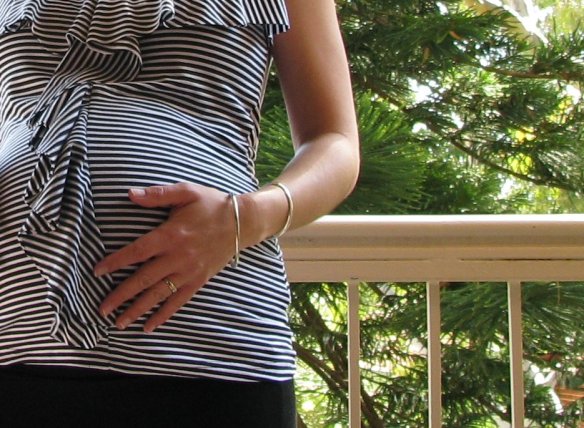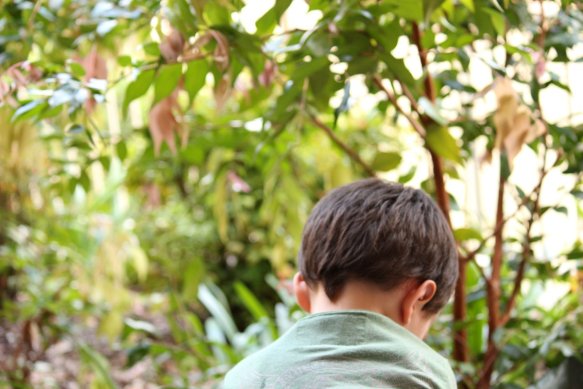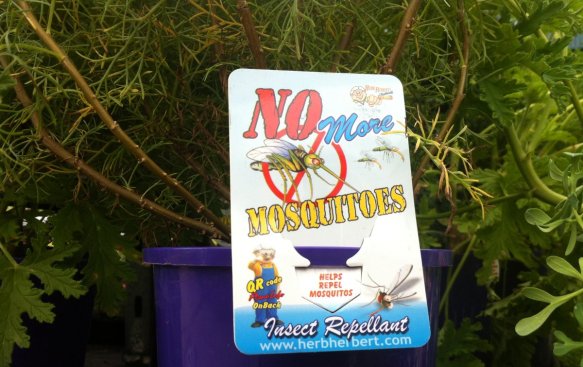
Hundreds of millions of people fall ill due to mosquito-borne pathogens every year but the recent rise in birth defects associated with Zika virus emerging in the Americas has health authorities on alert.
Zika virus is transmitted by mosquitoes, primarily by the Yellow Fever mosquito, Aedes aegypti. Since its discovery in Africa around 70 years ago it has avoided the public health spotlight due to the relatively mild illness it causes. Throughout Africa and Asia it is overshadowed in importance by the diseases caused by malaria parasites as well as dengue and chikungunya viruses.
For background on the rise of Zika virus, see my article for The Conversation.
Zika and the health risks to those pregnant and their unborn children
While Zika virus has yet to be fully confirmed as the causative agent in birth defects (such as microcephaly), there is clearly enough concern among health authorities in many parts of the world to issue warnings to those pregnant to avoid travel to countries experiencing an outbreak of Zika virus.
Authorities in Columbia and El Salvador have even gone so far as to advise residents to avoid falling pregnant for up to two years.
The Australian Government issued the following advice via their SmartTraveller website:
“Until more is known about Zika virus, and taking a very cautious approach, we advise women who are pregnant (in any trimester) or who plan to become pregnant to consider postponing travel to any area where Zika virus transmission is ongoing. If you do decide to travel, talk to your doctor first and strictly follow steps to prevent mosquito bites during your trip.”
For many, the option of not travelling will be easy. But what if you still want to travel? What if you’re doing business in some of these countries? What if you need to travel to visit family? Cancelling a trip isn’t always the easiest options.
Reducing risk of mosquito-borne disease while travelling
Irrespective of the current Zika outbreak, travelling while pregnant brings various health and safety risks. Other mosquito-borne diseases, such as malaria and dengue, also pose a risk to pregnant women and their unborn children. These serious risks existed long before Zika virus grabbed the public health spotlight.
Unfortunately, there is no vaccine currently available for Zika virus. Vaccines are in development for dengue viruses and anti-malaria drugs are available so consult your local travel health clinic.
While travelling, staying indoors as much as possible, particularly air-conditioned accommodation, will greatly reduce exposure to mosquitoes. This may not be how you expected to spend your time during a South American holiday!
Many people associate mosquito-borne disease with wetland or jungle environments but as Zika virus is spread by mosquitoes found in urban habitats (e.g. water-filled containers), travellers should not be complacent if only visiting cities. Some of the biggest recent outbreaks of mosquito-borne disease have been in major metropolitan regions in the Americas and Asia.

Mosquito control in Brazil, a striking image of the battle against container-inhabting mosquitoes (Image: Ernesto Benavides via International Business Times)
If you’re staying at a high end resort, chances are there will be a well established insect control program. This typically includes widespread spraying for insecticides to knock down any mosquito populations. This may not completely remove risk but it will substantially lower potential exposure to mosquitoes. Again, don’t be complacent and take special care to avoid mosquitoes if taking a day trip to local villages or other tourist attractions.
Sleeping under a bed net is usually recommended in regions where malaria is an annual problem but this may not offer that much protection against Zika virus as the mosquitoes that spread the virus primarily bite during the day. If you’re planning on taking some afternoon naps, make sure it is under a bed net. A range of insecticide treated bed nets are available from your local camping store.
There is also an ever increasing range of “pre-treated” insect repellent clothing but evidence is scarce on just how effective these are at preventing bites. Treating clothing with insecticide (e.g permethrin) yourself would be a better option but don’t expect that wearing treated clothing means you don’t have to put insect repellents on exposed skin.
Safe and effective use of mosquito repellents
There will be anxiety among many about using insect repellents while pregnant. Are they safe? Will they impact the baby?
Without doubt, the most commonly used, safe and effective mosquito repellents is DEET (I’ve written about these repellents extensively, see here and here but I’ll summarize below). This is found in lots of major commercial brands and is a mainstay in the recommendations issued by health authorities the world over. Problem is, it can be hard to find information on how to choose and use the repellent that’s right for you and your situation.
The first point to remember is that the the strength of the formulation determines how long you’re protected against mosquito bite, not how many mosquitoes are kept away. For example, a 10% DEET based repellent may provide 2h protection, a 20% formulation may provide 4h protection. When choosing a repellent, think about how long you need protection for and how frequently you’re happy to reapply.
Secondly, the repellent must be applied as an even coverage on all exposed skin. If there are “gaps” in the application, mosquitoes are sneaky enough to pick a spot to bite. In the case of the mosquitoes that spread Zika, dengue and chikungunya viruses, pay special attention to application around the lower legs and feet, that’s where they like to bite.
Be sure to reapply repellent after swimming or sweaty exercise too.
There is no need to apply mosquito repellents to skin under clothing.
Are repellents safe to use when pregnant?
Health authorities and regulatory agencies rarely provide specific warnings on the use of insect repellents by those pregnant. While there haven’t been many clinical trials, these papers (here and here) demonstrate a lack of documented significant health risk associated with the used of DEET-based repellents. Most notably, a study of almost 900 women using mosquito repellent in the second or third trimester and no adverse neurologic, gastrointestinal, or dermatologic effects were observed in women or their infants for a year after birth.
It is important to balance the distinct lack of evidence of major health risks associated with repellents to the rapid rise in microcephaly in Brazil. Repellents can stop mosquitoes bites, stop mosquito bites and remove the risk of infection. If you use registered mosquito repellents as directed on the label, they are effective and safe.
Common sense must prevail. Even if you’re concerned about the use of repellents, make some compromises while still protecting yourself for infection. Choose a lower dose DEET-based repellent and reply more often. This is a better approach than trying a repellent that hasn’t been proven effective.
I’m often asked what formulation works best. There are aerosol sprays, roll-ons, pump-pack sprays, creams, gels, lotions and even towelettes. There really haven’t been many scientific studies looking at which if these formulations work best, and for good reason. As the active ingredients in these formulations are the same, it doesn’t really matter. The critical issue is to choose a formulation that you’re most comfortable using to ensure you get a good coverage over exposed skin. I like creams and pump-pack sprays but I generally apply the product to my hands first and them spread across skin.
Always ensure you avoid getting repellent in your eyes or any cuts or abrasions.
I don’t like the smell or feel of mosquito repellents!
There is often a temptation for those who dislike DEET to use a “natural“, plant-based repellents. Notwithstanding that these products provide shorter periods of protection, tea-tree oil (particularly when used in home-made concoctions) also has the potential to cause skin irritation. While plant-based mosquito repellents may offer some protection against nuisance-biting mosquitoes, they shouldn’t be relied on to prevent mosquito bites in regions of mosquito-bore disease outbreaks.
Many health authorities recommend para-Menthane-3,8-diol (PMD), a product commonly known as “oil of lemon eucalyptus”. This is not an essential oil but rather the by product of the distillation process of Corymbia citriodora. The product does repel a range of biting insects and there is no evidence suggesting it should not be used in pregnancy. However, in Australia, this product is generally more difficult to find in grocery stores and pharmacies than DEET- or picaridin-based repellent formulations.
It would be brilliant if there was a non-topical options for stopping mosquito bites. Unfortunately, there is nothing that has been proven effective. Do not rely on mosquito repellent wrist bands as they do not provide adequate protection against mosquitoes. Also, remember that there is nothing you can eat or drink that will stop you being bitten by mosquitoes.
Rounding out the advice on mosquito repellents, make sure you pack some before you leave. You can never be sure of what products will be available at your destination or whether it has gone through the process of registration (e.g. APVMA in Australia or EPA-registered in the U.S.). It is not unheard of for mosquito repellent stock to sell out during outbreaks of disease.
Lastly, if you’re travelling to regions experiencing dengue, chikungunya and Zika virus outbreaks, don’t necessarily expect to be swarmed by mosquitoes in the same way you will around many of Australia’s coastal wetlands. Don’t be complacent if there are only a few about, remember, it only take one bite to transmit a pathogen. Don’t wait until you notice mosquitoes biting, wake up and put on that repellent.
There is a great set of questions with answers provided by the CDC for pregnant travellers on Zika risk and prevention and here is another reminder of the travel advice provided by the CDC and Australian Government for pregnant women.
If planning to travel while pregnant, consult your local doctor or travel health clinic for advice.
Want to learn more about the amazing world of Australian mosquitoes? Check out “A Field Guide to Mosquitoes of Australia” out now through CSIRO Publishing. Over 200 pages containing a pictorial guide to almost 100 different mosquitoes along with tips on beating their bite and protecting your family from the health risks of mosquitoes. You can order online or through your favourite local bookstore or online retailer.




